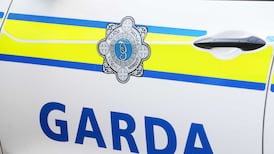THE ORDNANCE Survey of Ireland (OSI) is rolling out a project to map the State using Lidar – a technology which employs airborne laser scanning to build up three-dimensional models of the terrain below.
While ordinary aerial photographs give only a two-dimensional image, Lidar uses millions of light beams to detect different layers such as ground level, building height and vegetation coverage.
The system can be particularly useful for matching river levels with surrounding lands to identify quickly where flooding is likely to occur should a river rise or break its banks.
A recent scan of levels around the Triogue River in Portlaoise, Co Laois, for example, was computer enhanced to ascribe a colour to the level of the river.
All nearby land levels with the same colour were then instantly identified as vulnerable in the event of flooding.
The OSI technology was also able to produce a map of what the town would look like should water levels in the Triogue rise by one metre.
Another example covered a field near Strokestown in Co Roscommon. Ordinary aerial photography had revealed nothing more than a copse of trees. But a scan using Lidar was able to identify different heights among the trees, with the highest trees forming a circle.
The system was then able to exclude any lasers which had detected anything above ground level, and the resulting image revealed the clear presence of a ring fort on which the trees had grown over centuries.
Apart from applications for planners and archaeologists, Lidar images also have applications for farmers and builders of infrastructure such as roads, among others.
According to Geraldine Ruane, chief executive of OSI, “The use of Lidar provides very accurate height information for both private and public customers.
“Using this information allows detailed modelling of the ground and surface terrain, providing better information for decision making, and ultimately savings on costs.”
To cover costs of the aerial photography and scanning involved – OSI uses an airborne Leica ALS50 laser scanner – the organisation is selling the information gleaned as a new environmental report.
Areas so far covered by the project include all major cities and 80 regional locations.
There is significant coverage of rural Ireland as well as complete coverage of the country with lower resolution data.









